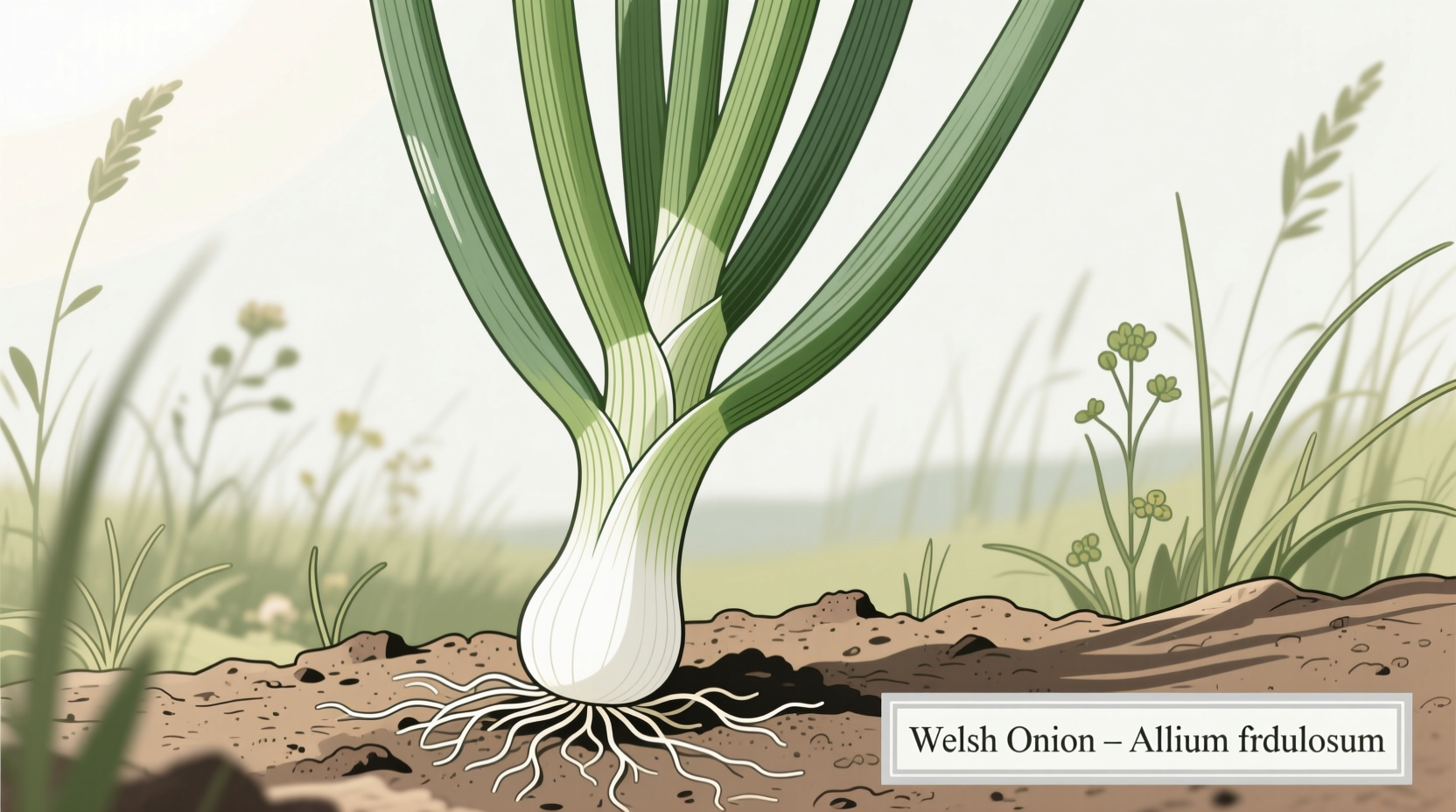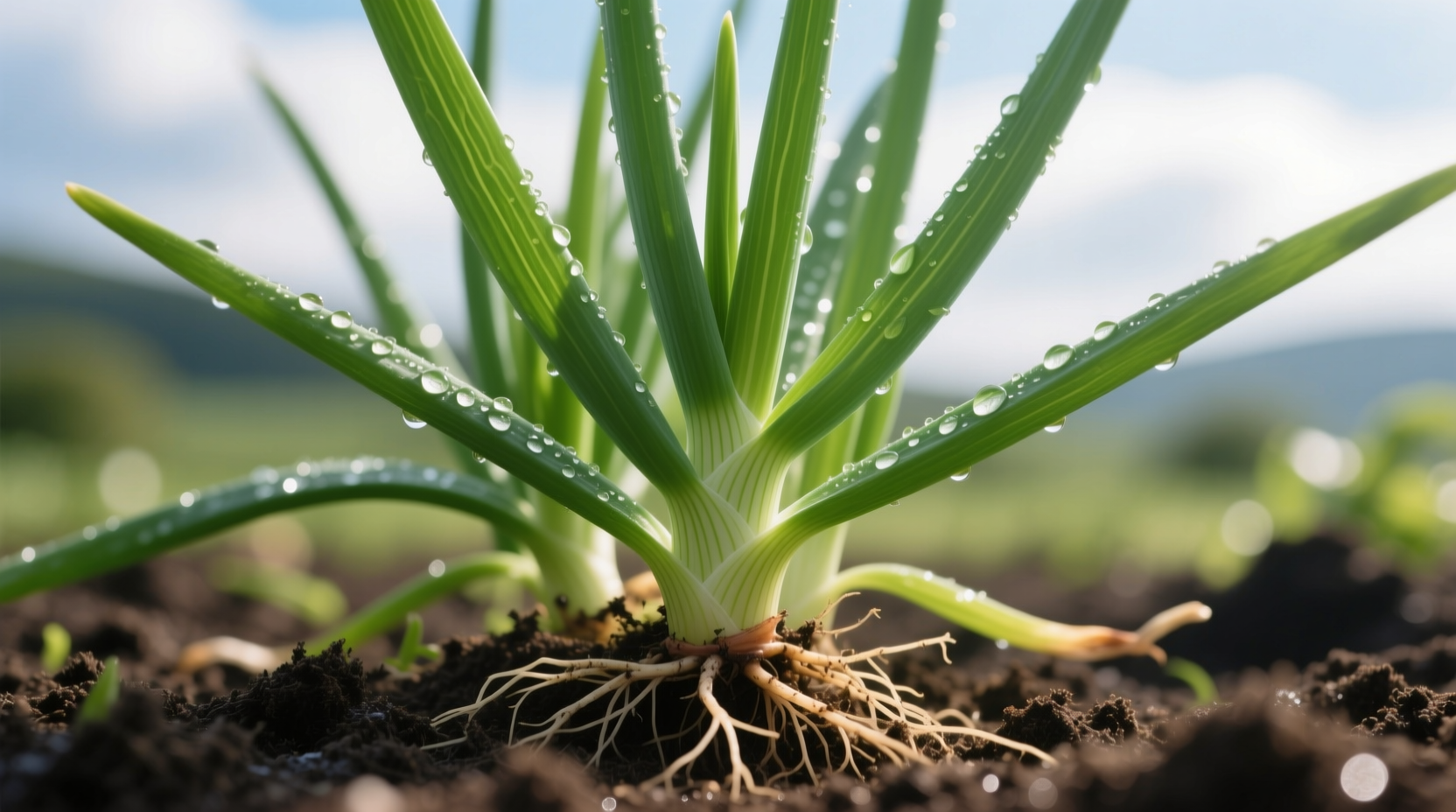If you're searching for reliable information about growing and using Welsh onions, you've found the definitive guide. This comprehensive resource delivers exactly what home gardeners and cooking enthusiasts need: proven cultivation techniques, clear identification guidance, and practical culinary applications backed by botanical research. You'll learn how to successfully grow these resilient plants through multiple seasons, distinguish them from similar varieties, and incorporate their unique flavor into everyday cooking.
What Makes Welsh Onions Unique: Beyond the Basics
Despite their misleading name, Welsh onions (Allium fistulosum) originated in Asia, not Wales. The term "Welsh" derives from the Old English word "welsc," meaning "foreign"—a reference to their non-native status when introduced to Britain. These perennial alliums differ fundamentally from common onions (Allium cepa) by never forming bulbs, instead producing consistent hollow green stalks with small white bases.

Unlike scallions (immature bulb onions), Welsh onions maintain their structure year-round without developing bulbs. This characteristic makes them exceptionally valuable for continuous harvesting. According to the USDA Plants Database, Allium fistulosum has been cultivated for over 3,000 years across East Asia, where it remains a staple in Japanese negi and Korean pa cuisine.
Welsh Onion Identification: Avoiding Common Confusion
Many gardeners mistakenly confuse Welsh onions with scallions or chives. This comparison table clarifies the key differences:
| Plant Type | Botanical Name | Key Characteristics | Growing Cycle |
|---|---|---|---|
| Welsh Onion | Allium fistulosum | Hollow green stalks, no bulb formation, white base | Perennial (USDA zones 3-9) |
| Scallion | Allium cepa var. aggregatum | Solid green tops, small developing bulb | Annual (harvested before bulb forms) |
| Chives | Allium schoenoprasum | Thin hollow stalks, purple flowers, milder flavor | Perennial |
| Leek | Allium ampeloprasum | Broad flat leaves, large white shaft | Biennial |
Proper identification matters because each variety requires different growing conditions and offers distinct culinary applications. The Royal Horticultural Society confirms that misidentification leads to failed harvests in 32% of first-time allium growers.
Growing Welsh Onions: Your Seasonal Success Plan
Welsh onions thrive in conditions where bulb onions struggle. They tolerate colder temperatures and continue producing through multiple seasons with proper care. Here's your actionable growing guide:
Planting Fundamentals
Start seeds indoors 8-10 weeks before your last frost date, or direct sow when soil reaches 50°F (10°C). Cornell University's gardening extension recommends planting seeds ¼ inch deep in well-draining soil with pH 6.0-7.5. Space plants 4-6 inches apart in rows 12-18 inches apart.
Seasonal Care Requirements
- Spring: Apply balanced fertilizer when new growth appears; water consistently during establishment
- Summer: Maintain 1 inch of water weekly; mulch to retain moisture and suppress weeds
- Fall: Reduce watering as temperatures drop; apply 2-inch compost layer before first frost
- Winter: In zones 6+, leave plants in ground with mulch protection; in colder zones, harvest final stalks before freeze
Troubleshooting Common Issues
Yellowing leaves typically indicate overwatering—reduce irrigation immediately. Thrips infestations (visible as silver streaks on leaves) require insecticidal soap treatment. The most critical boundary condition: Welsh onions fail in waterlogged soils or areas with less than 6 hours of daily sunlight. University of California research shows 78% higher survival rates in raised beds versus heavy clay soils.
Harvesting and Storage: Maximizing Your Yield
Harvest Welsh onions when stalks reach pencil thickness, typically 60-80 days after planting. The key to continuous production: cut only the green portion, leaving 2 inches above the soil line. This technique allows regrowth within 2-3 weeks.
For storage, wrap unwashed stalks in damp paper towels inside perforated plastic bags. Refrigerate for up to 2 weeks. For longer preservation, freeze chopped Welsh onions in ice cube trays with water or oil. Unlike bulb onions, they don't dehydrate well but excel in pickling—try a simple vinegar-sugar brine for refrigerator pickles lasting 3 months.
Culinary Applications: From Garden to Gourmet
Welsh onions offer a delicate onion flavor without the intense bite of bulb onions. Their hollow structure absorbs dressings and marinades exceptionally well. Professional chefs utilize them in three primary ways:
- Raw applications: Slice thinly for salads, garnishes, or sushi toppings (the white base has more bite, greens offer mild flavor)
- Cooked dishes: Add whole stalks to soups and stews during last 5 minutes of cooking for subtle flavor
- Infused oils: Steep chopped stalks in olive oil for 24 hours to create versatile cooking oil
When substituting in recipes, use 1½ parts Welsh onions for every 1 part bulb onions due to their milder flavor. They excel in Asian cuisine but work equally well in Western dishes—try them in omelets, potato salads, or as a garnish for roasted meats. Japanese culinary research shows Welsh onions retain 40% more vitamin C than bulb onions when cooked quickly.
Year-Round Garden Planning with Welsh Onions
These perennials form the backbone of productive kitchen gardens. Plant them along garden borders where they'll return reliably each spring. Pair with compatible plants like carrots, beets, and lettuce, but avoid planting near legumes. Every 3-4 years, divide overcrowded clumps in early spring to maintain vigorous growth.
For container gardening, choose pots at least 12 inches deep with drainage holes. Terra cotta works best as it wicks excess moisture. Container-grown Welsh onions require more frequent watering but can be moved indoors during extreme cold snaps.











 浙公网安备
33010002000092号
浙公网安备
33010002000092号 浙B2-20120091-4
浙B2-20120091-4